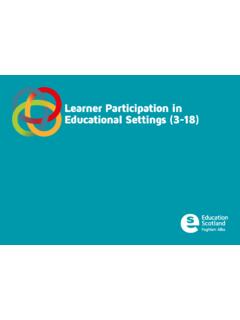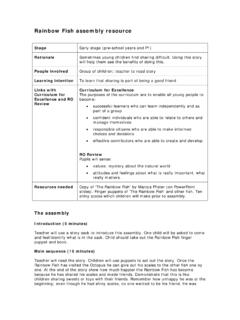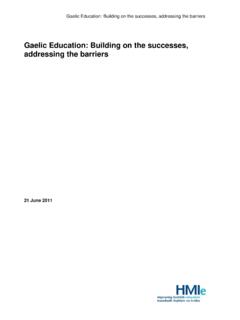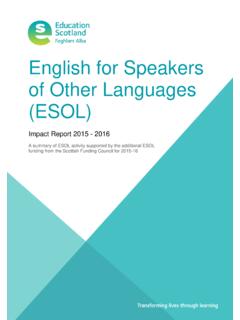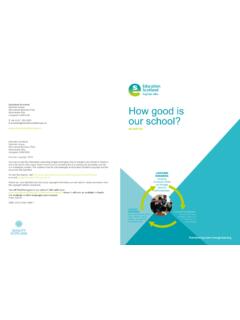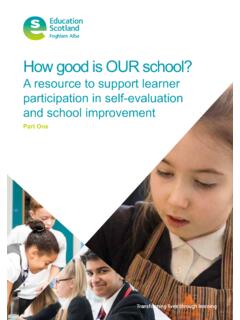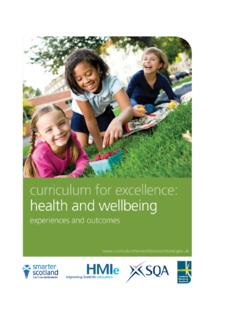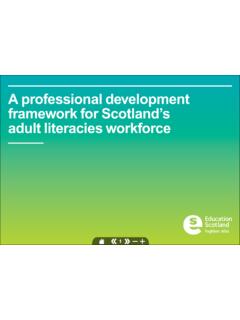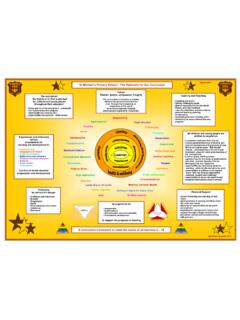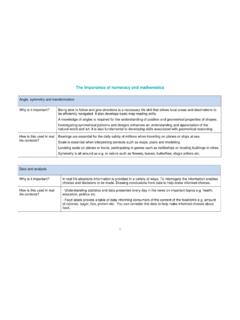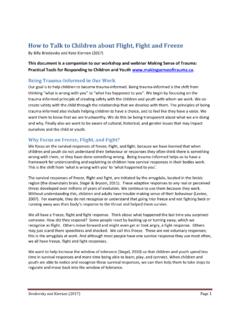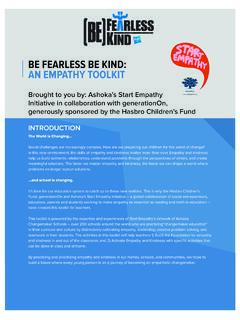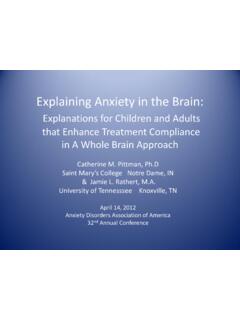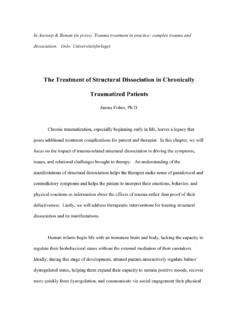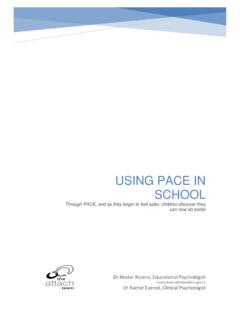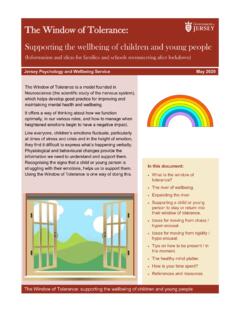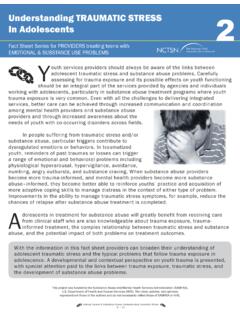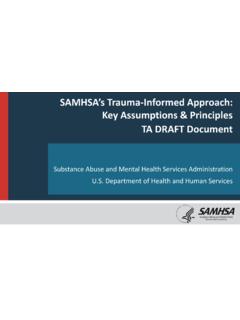Transcription of Tools for gathering the views of children and young people
1 Tools for gathering the views of children and young people May 2020_____ gathering the views of children and young people 2 _____ gathering the views of children and young people 3 Does this heading look familiar? It s that tricky section in the Child s Plan which for some children / young people with complex needs can seem a difficult if not impossible task to complete. More and more we are being encouraged to gather the views of children / young people with Additional Support Needs (ASN) around their likes and dislikes, emotions and feelings, friendships and things that matter to them. This document includes some Tools and strategies which might help to ensure that we are gathering the child/ young person s views and giving them a voice not only during the Highland Practice Model process but thinking beyond the Child s Plan.
2 Here is a selection of ideas which may be useful, but it is by no means an exhaustive list. Ensure to match the strategy to the child/ young person s strengths, interests and communication and developmental level. *Disclaimer: Some commercial Tools are included within this document. These are Tools that are used from time to time by colleagues. Their inclusion does not constitute a recommendation to purchase these Tools . What does legislation say about this? Under the United Nations Convention on the Rights of the Child (UNCRC) all children , including those with ASN and disabilities, have the right to have their views sought and expressed. UNCRC Article 12 (respect for the views of the child) - Every child has the right to express their views , feelings and wishes in all matters affecting them, and to have their views considered and taken seriously.
3 UNCRC Article 13 (freedom of expression) - Every child must be free to express their thoughts and opinions and to access all kinds of information, as long as it is within the law. This can be challenging particularly for very young children as well as for children / young people with barriers to communication - hopefully some of the following Tools will help. Involving children / young people in meetings This can be a positive experience for the child/ young person and family, but it can also be a tricky one to manage, depending on their needs. We shouldn t assume that the child/ young person can or can t attend and it may be just for part of the meeting but think carefully about how they might react and the difficulties for parents trying to focus.
4 Discuss and agree the best approach with the parents and child/ young person, where appropriate, as part of preparing them for the meeting. At a meeting share photos/video of the child/ young person: coming into the setting/class, in the setting doing something they enjoy or in their safe space; working on one of their targets and include a comment beside it in their voice; extracts, photos and comments from their Profile or class work; and engaged in out of school activities. Child/ young person s views (must be completed) _____ gathering the views of children and young people 4 Solution focused meetings A multi-agency group meets to consider how best to support the needs of specific pupils.
5 The solution focused meeting will focus on solutions and include parents and children / young people s views . Solution Focused Meeting Information Leaflet What can you do? Become familiar with the various methods and Tools mentioned below. Discuss with parents, carers and professionals which might be the most suitable to match to the child/ young person s strengths. Some of the approaches require an investment of time but you may get better results each time you use them. Start small, try one out and see what works best. Use familiar adults to help gather this information Talk to parents/carers, school staff and other professionals involved about what works well for the child/ young person and what they feel they enjoy doing best.
6 This information can be used to feed into the wider picture of a child/ young person s life. Familiar adults can be particularly useful for gathering information about children and young people with complex needs and can be used to complete the child/ young person s view section of the plan. Things to consider: How do children / young people respond to different experiences and environments? How do people know this? What do they enjoy? Is there an impact on their stress or alertness levels and in which situations? Within the education setting you could comment on how children / young people respond when: they put on their uniform/sweatshirt; parents/carers pick up their back pack or snack box ; they see the building, their friends or staff as they arrive; they are with their friends; they are in class and with staff; and during break times.
7 Outside the education setting you could comment on how children / young people respond to: play activities, interests, hobbies, being alone or with friends; activities and environments outside the home; achievements have they made; and socialising with their family and the social circle beyond. _____ gathering the views of children and young people 5 Wesley Tingey on Unsplash Observations Observations* can be used to notice children and young people s behaviours and reactions to certain situations, activities or events. Observations can help to provide information on: what they like or dislike; how they express their feelings; what soothes or settles them; what upsets, stresses or overexcites them; whether they look to an adult for a safe base; how they look when near staff or other children / young people relaxed, fidgety, uncomfortable; their primary response to stressful situations ( fight , flight or freeze ); engagement/disengagement with certain tasks/subjects; peer relationships; and strategies that children / young people use to help themselves.
8 Observations are best carried out over multiple sessions, at different times of the day and week, as any number of factors may be impacting on how a child or young person may present at a certain time. Any assumptions made about how they might feel should be checked out with them as much as possible. For pupils who may find it difficult to answer questions verbally, assumptions could also be checked out by using some of the other techniques suggested in this document ( Faces - Likert Scale; Blob Trees; Traffic Lights). *Please note, ethical questions will arise when observing a child/ young person, and these should be fully considered before proceeding.
9 Using an Intensive Interaction type approach Intensive Interaction type strategies used in play promote positive relationships by focusing on the foundations of early interactions: being attentive, showing interest, anticipating, sharing, turn taking, trust and respect. This practical approach can be particularly useful in building up a relationship leading to a greater awareness of what matters most to the child/ young person their voice. For more information see: SELFIE Steps Responsive Communication EASEYS for ASN Intensive Interaction Using puppets A child/ young person who may have difficulty with face to face conversation with an adult might relate better to a puppet.
10 They may follow the puppet s instructions or talk back to it or just feel more comfortable with the puppet there. See Resilient Kids to School for some ideas on using puppets to support activities around emotional literacy and resilience. _____ gathering the views of children and young people 6 Pen portraits Ways YOU can help ME A Ways YOU can help ME sheet, written in the child/ young person s voice, can provide an easily accessible way of sharing information within the setting on the targets and practical strategies which help support them. All About Me booklets and personal communication passports For some children / young people more information is needed due to the complexity of their ASN.
